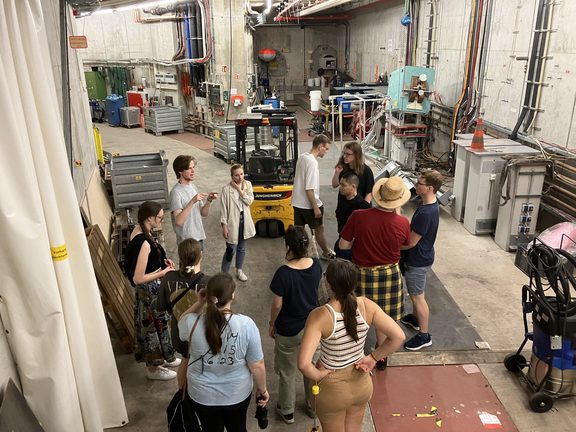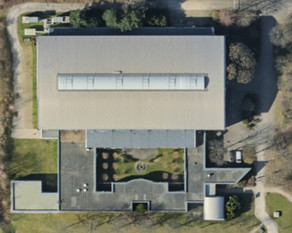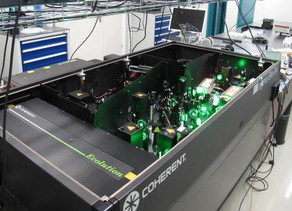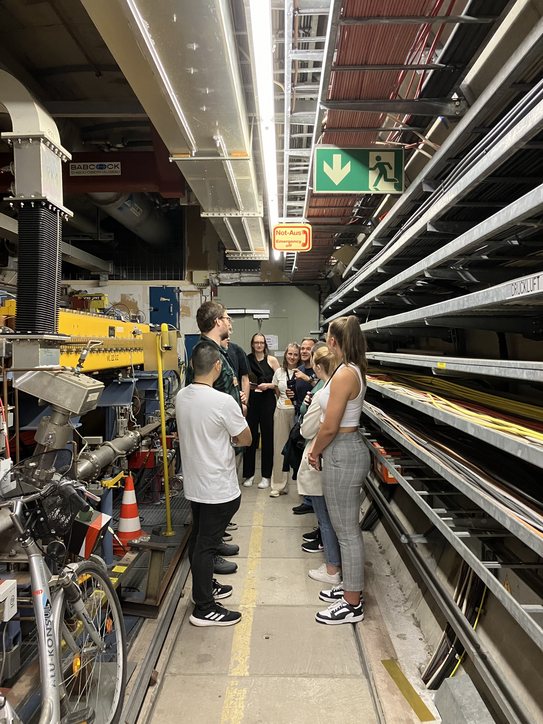Field Trip of the Course Beschleunigerphysik II
- News

Day One
On Thursday, June 27th, 2024, the excursion began at Dortmund Central Station. From there, participants traveled by ICE train to Hamburg Central Station and then proceeded to the DESY campus in the western part of the city.
After arriving at DESY, a short tour of the campus was conducted until the entrance to the European XFEL tunnel was reached. The European XFEL is a free-electron laser that generates highly brilliant X-rays with pulse durations as short as the attosecond range. This requires a long acceleration and undulator section, which is why the experimental hall is located in Schenefeld, Schleswig-Holstein. Since the entire tunnel is a straight line, one could get a sense of the 3.4-kilometer length of the accelerator.
Following this visit, the accelerator control room (BKR) was toured. Here, it became apparent just how much effort is involved in operating and monitoring the various facilities on the DESY campus.
The excursion continued after a brief weather-related pause in the FLASH tunnel. Like the European XFEL, FLASH is a free-electron laser, but it is designed for a different wavelength range. In the tunnel, the necessary components for generating, accelerating, and focusing the electrons were shown, up to the point where the beamline splits. Each branch leads to one of the two experimental halls.
The evening program began with a visit to an escape room, which encouraged social interaction and provided a welcome change from the focus on physics. The day concluded with a shared dinner, rounding off this informative and interesting day.
Day Two
The second day began with a short breakfast followed by a tour of the decommissioned storage ring HERA, which, with a circumference of more than six kilometers, was the largest research instrument in Germany. Until 2007, experiments in this dual ring involved collisions between electrons and positrons with protons. Due to the decommissioning of the ring, various beamline components could be inspected without interruption.
The next part of the excursion was a visit to the "Albert Einstein" experimental hall. This hall is located at the end of one of the two branches of the FLASH facility and houses five experimental stations where FLASH radiation is used for various studies. During the tour, participants were given an overview of the hall's layout and the potential uses of the soft X-ray radiation generated by FLASH.
The excursion continued with a tour of the "Max von Laue" experimental hall, which is connected to PETRA III, Germany's largest synchrotron radiation source. The unique feature of this hall is that it stands on the largest single-cast concrete slab in the world, ensuring that the high-precision experiments can be conducted without vibrations. In addition to various experimental stations, the beamline was presented where the Helml research group from DELTA recently conducted test measurements with a newly designed electron spectrometer.
The excursion concluded with a visit to the experimental hall in Schenefeld, where the radiation generated by the European XFEL is used for scientific investigations. After a brief tour of the site, various beamlines and instruments were inspected, which were fully accessible due to the ongoing shutdown for refurbishment work.
Following this final visit, the highly interesting and informative two-day excursion ended with the return journey to Dortmund Central Station.




![[Translate to English:] [Translate to English:]](/storages/delta/_processed_/a/4/csm_standard_seitenheader_7382467fdd.jpg)

